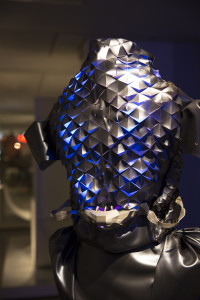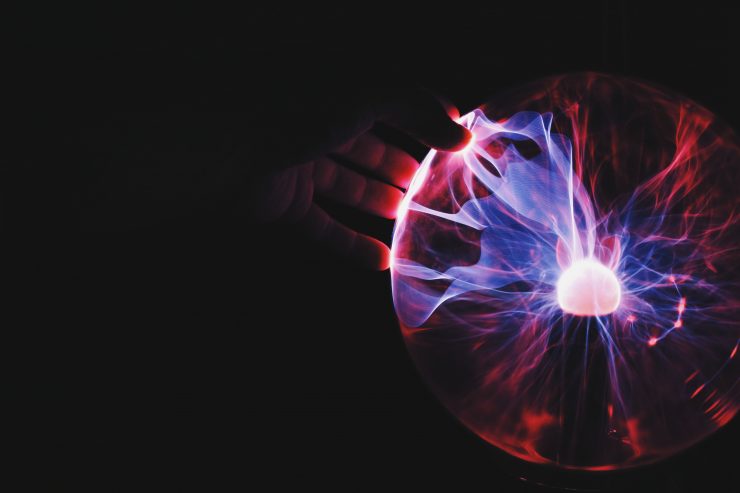What is your background?
I have a background in dance, costume, and physiotherapy. I began studying classical ballet when I was 6 years old and there began my lifelong passion to explore body expression. For my bachelor degree, I studied costume design with the focus of clothing designed to influence body positions and therefore enhance emotive qualities of movement. I also studied new media and was employed as a professional dancer, a costumer, and a designer. Then, I began to study physical therapies to understand more of the form and function of the human body specializing in Dancers.
Who or what first inspired you to follow your chosen career?
While employed as a Dance Medicine Specialist, I discovered the root of healing is awareness.
I have always been a maker and I decided to go back to graduate school for Design, to create tangible tools for body awareness. There, I discovered microcontrollers that could program bio sensors to create new behaviors.
This was the beginning of my love affair – my passion to enhance body expression and awareness with technology.
Now, I am happy to be a biometric fashion designer at sensoree.com where I can use all my talents to create future fashions at the nexus at health care, gaming, and fashion.
 What kinds of materials and technologies are used and integrated into your designs? And what does technology add to fashion?
What kinds of materials and technologies are used and integrated into your designs? And what does technology add to fashion?
I am the founder of SENSOREE Therapeutic Biomedia – Biometric fashion for sensory awareness.
We work with bio sensors like EEG/brain, EKG/heart rate, GSR/excitement, flexible movement sensors, and IR/proximity sensors to monitor corporeal states. SENSOREEs Therapeutic Biomedia converts this bio data andenhancesthe bodies language with new expression, like light and tactile displays.
We call this “extimacy” or externalized intimacy. Showing how you feel on the inside to the outside world.
An important component of my work is the biofeedback or self-awareness. This has therapeutic applications for the wearer and the visual displays also helps communicate to others to increase empathy.
Sensoree stemmed from research to create tools for Sensory Processing Disorder SPD which ranges from ADHD to Autism. We now has interest from Alzheimers community and pediatrics.
What does technology add to fashion? … Superhero powers!
Technology enhances awareness and offers new forms of communication. It can be a training tool to help re-pattern anything from movement to the intuitive sense. Sensory feedback can help motivate and create new behaviors.
Currently, fashion is primarily a self-expression on the exterior body. Technology introduces new possibilities of accessing the interior states and animating fabric. Opportunities are biofeedback for the self, extensions of personality, and even remote touch or communication between people. I am so excited for this future!
What’s next for you? What are your resolutions in 2016?
My word for 2016 is epiphany. The aha! moment or breakthrough with that comes from discipline and dedication. I want to find that feeling. So that means more work and an invitation to see things in a new way. Focus on the art of invention.
We are working on our first product, the Mood Sweater. We will have a limited edition run available very soon.
Please stay tuned! www.Sensoree.com/moodsweater
And you, What makes your fear / blush ?
Everything makes me blush!
There is a quote, “Do one thing every day that scares you,” from Eleanor Roosevelt. I try embody this advice.
Try a new route. Take risks. Follow adventure and get nervous! Blush in many colors. It is good for you.
Thanks!
Kristin Neidlinger (USA) is the SENSOREE founder, future concepts designer — endeavors to craft phenomenal technology to enhance and expand physical embodiment. She has a background in dance, kinetic costumes, and in physical therapies as a Dance Medicine Specialist. With her MFA in Interaction Design from California College of the Arts, 2010, she became curious as to how wearable computers could be therapeutic, emotive, and enhance sensory awareness. Her works is presented by several technology conferences, fashion shows, and museums and future visionary events.

